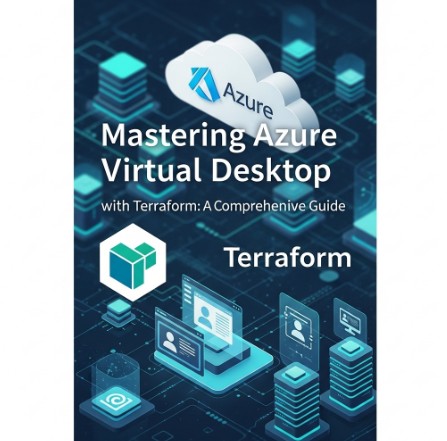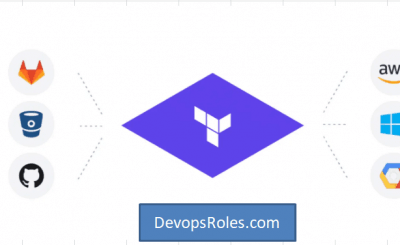Azure Virtual Desktop (AVD) provides a powerful solution for delivering virtual desktops and applications to users, enhancing productivity and security. However, managing AVD’s complex infrastructure manually can be time-consuming and error-prone. This is where Terraform comes in, offering Infrastructure as Code (IaC) capabilities to automate the entire deployment and management process of your Azure Virtual Desktop environment. This comprehensive guide will walk you through leveraging Terraform to efficiently configure and manage your Azure Virtual Desktop, streamlining your workflows and minimizing human error.
Table of Contents
- 1 Understanding the Azure Virtual Desktop Infrastructure
- 2 Setting up Your Terraform Environment for Azure Virtual Desktop
- 3 Building Your Azure Virtual Desktop Infrastructure with Terraform
- 4 Deploying the Terraform Configuration
- 5 Managing Your Azure Virtual Desktop with Terraform
- 6 Frequently Asked Questions
- 6.1 What are the benefits of using Terraform for Azure Virtual Desktop?
- 6.2 Can I manage existing Azure Virtual Desktop deployments with Terraform?
- 6.3 How do I handle sensitive information like passwords in my Terraform configuration?
- 6.4 What are the best practices for securing my Terraform code and configurations?
- 7 Conclusion
Understanding the Azure Virtual Desktop Infrastructure
Before diving into Terraform, it’s crucial to understand the core components of an Azure Virtual Desktop deployment. A typical AVD setup involves several key elements:
- Host Pools: Collections of virtual machines (VMs) that host the virtual desktops and applications.
- Virtual Machines (VMs): The individual computing resources where user sessions run.
- Application Groups: Groupings of applications that users can access.
- Workspace: The user interface through which users connect to their assigned virtual desktops and applications.
- Azure Active Directory (Azure AD): Provides authentication and authorization services for user access.
Terraform allows you to define and manage all these components as code, ensuring consistency, reproducibility, and ease of modification.
Setting up Your Terraform Environment for Azure Virtual Desktop
To begin, you’ll need a few prerequisites:
- Azure Subscription: An active Azure subscription is essential. You’ll need appropriate permissions to create and manage resources.
- Terraform Installation: Download and install Terraform from the official website: https://www.terraform.io/downloads.html
- Azure CLI: The Azure CLI is recommended for authentication and interacting with Azure resources. Install it and log in using
az login. - Azure Provider for Terraform: Install the Azure provider using:
terraform init
Building Your Azure Virtual Desktop Infrastructure with Terraform
We will now outline the process of building a basic Azure Virtual Desktop infrastructure using Terraform. This example uses a simplified setup; you’ll likely need to adjust it based on your specific requirements.
Creating the Resource Group
First, create a resource group to hold all your AVD resources:
resource "azurerm_resource_group" "rg" {
name = "avd-resource-group"
location = "WestUS"
}
Creating the Virtual Network and Subnet
Next, define your virtual network and subnet:
resource "azurerm_virtual_network" "vnet" {
name = "avd-vnet"
address_space = ["10.0.0.0/16"]
location = azurerm_resource_group.rg.location
resource_group_name = azurerm_resource_group.rg.name
}
resource "azurerm_subnet" "subnet" {
name = "avd-subnet"
resource_group_name = azurerm_resource_group.rg.name
virtual_network_name = azurerm_virtual_network.vnet.name
address_prefixes = ["10.0.1.0/24"]
}Deploying the Virtual Machines
This section details the creation of the virtual machines that will host your Azure Virtual Desktop sessions. Note that you would typically use more robust configurations in a production environment. The following example demonstrates a basic deployment.
resource "azurerm_linux_virtual_machine" "vm" {
name = "avd-vm"
resource_group_name = azurerm_resource_group.rg.name
location = azurerm_resource_group.rg.location
size = "Standard_D2s_v3"
admin_username = "adminuser"
# ... (rest of the VM configuration) ...
network_interface_ids = [azurerm_network_interface.nic.id]
}
resource "azurerm_network_interface" "nic" {
name = "avd-nic"
location = azurerm_resource_group.rg.location
resource_group_name = azurerm_resource_group.rg.name
ip_configuration {
name = "internal"
subnet_id = azurerm_subnet.subnet.id
private_ip_address_allocation = "Dynamic"
}
}Configuring the Azure Virtual Desktop Host Pool
The creation of the host pool utilizes the Azure Virtual Desktop API. The below code snippet shows how this process can be automated using the AzureRM provider.
resource "azurerm_virtual_desktop_host_pool" "hostpool" {
name = "avd-hostpool"
resource_group_name = azurerm_resource_group.rg.name
location = azurerm_resource_group.rg.location
type = "Personal" # Or "Pooled"
personal_desktop_assignment_type = "Automatic" # Only for Personal Host Pools
# Optional settings for advanced configurations
}Adding the Virtual Machines to the Host Pool
This step links the virtual machines you deployed to the created Host Pool, making them available for user sessions:
resource "azurerm_virtual_desktop_host_pool" "hostpool" {
# ... (Existing Host Pool configuration) ...
virtual_machine_ids = [azurerm_linux_virtual_machine.vm.id]
}Deploying the Terraform Configuration
Once you’ve defined your infrastructure in Terraform configuration files (typically named main.tf), you can deploy it using the following commands:
terraform init: Initializes the working directory, downloading necessary providers.terraform plan: Generates an execution plan, showing you what changes will be made.terraform apply: Applies the changes to your Azure environment.
Managing Your Azure Virtual Desktop with Terraform
Terraform’s power extends beyond initial deployment. You can use it to manage your Azure Virtual Desktop environment throughout its lifecycle:
- Scaling: Easily scale your AVD infrastructure up or down by modifying your Terraform configuration and re-applying it.
- Updates: Update VM images, configurations, or application groups by modifying the Terraform code and re-running the apply command.
- Rollback: In case of errors, you can easily roll back to previous states using Terraform’s state management features.
Frequently Asked Questions
What are the benefits of using Terraform for Azure Virtual Desktop?
Using Terraform offers several advantages, including automation of deployments, improved consistency, reproducibility, version control, and streamlined management of your Azure Virtual Desktop environment. It significantly reduces manual effort and potential human errors.
Can I manage existing Azure Virtual Desktop deployments with Terraform?
While Terraform excels in creating new deployments, it can also be used to manage existing resources. You can import existing resources into your Terraform state, allowing you to manage them alongside newly created ones. Consult the Azure provider documentation for specifics on importing resources.
How do I handle sensitive information like passwords in my Terraform configuration?
Avoid hardcoding sensitive information directly into your Terraform code. Use environment variables or Azure Key Vault to securely store and manage sensitive data, accessing them during deployment.
What are the best practices for securing my Terraform code and configurations?
Employ version control (like Git) to track changes, review code changes carefully before applying them, and use appropriate access controls to protect your Terraform state and configuration files.

Conclusion
Terraform offers a robust and efficient approach to managing your Azure Virtual Desktop infrastructure. By adopting Infrastructure as Code (IaC), you gain significant advantages in automation, consistency, and manageability. This guide has provided a foundational understanding of using Terraform to deploy and manage AVD, enabling you to streamline your workflows and optimize your virtual desktop environment. Remember to always prioritize security best practices when implementing and managing your AVD infrastructure with Terraform. Continuous learning and keeping up-to-date with the latest Terraform and Azure Virtual Desktop features are crucial for maintaining a secure and efficient environment.Thank you for reading the DevopsRoles page!
